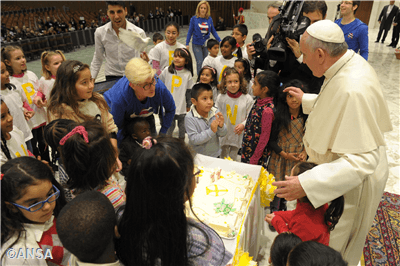“Analyzing Benedict’s prayer with Ratzinger’s criteria”
When Benedict XVI stood alongside Istanbul’s chief Islamic cleric, Imam Mustafa Cagrici, in the famed Blue Mosque on Nov. 30, praying silently in the direction of Mecca, those who know Ratzinger’s track record no doubt asked: What happened to the man who once worried that inter-religious prayer can mean “a concession to that relativism which negates the very meaning of truth?”
This was, after all, the same champion of Catholic identity who said of Pope John Paul II’s 1986 summit of religious leaders in Assisi to pray together for peace—or, at least, of the way that event was understood in some circles—“This cannot be the model!”
... Why the explanatory vacuum? The answer, at least implicitly, seems to be the following: This pope is his own gloss.
In other words, precisely because this was Joseph Ratzinger, it is difficult to imagine that the prayer at the Blue Mosque, at least on his side, had anything to do with a relativistic approach to religious belief. It was unnecessary to slap a warning label on the event saying, “Syncretism is hazardous to your faith,” because the mere presence of Ratzinger communicated in a flash all the doctrinal caveats that form part of his understanding of such events, including his criticism of the 1986 Assisi summit.
Had this been another senior Catholic official—Cardinal Roger Etchegaray, for example, or Archbishop Michael Fitzgerald, both known for more irenic views on Islam and other religions generally—fierce debate might have been unleashed about the theological meaning of the prayer, and one can imagine the Vatican issuing a “clarification” spelling out all the qualifications.
Yet this wasn’t Etchegaray or Fitzgerald. It was, instead, the very man who identified a “dictatorship of relativism” as the central challenge facing the church one day before his election to the papacy.
Technorati Tags:Blue Mosque, Catholic, Islam, Pope, pope benedict xvi, Turkey





Actually I found this part of John Allen’s analysis more pertinent to the situation:
<i>
You shouldn’t end your quote of Allen there. He says that Kasper probably meant that it was not a formal liturgical event.
I didn’t think that was pertinent so I left it out.